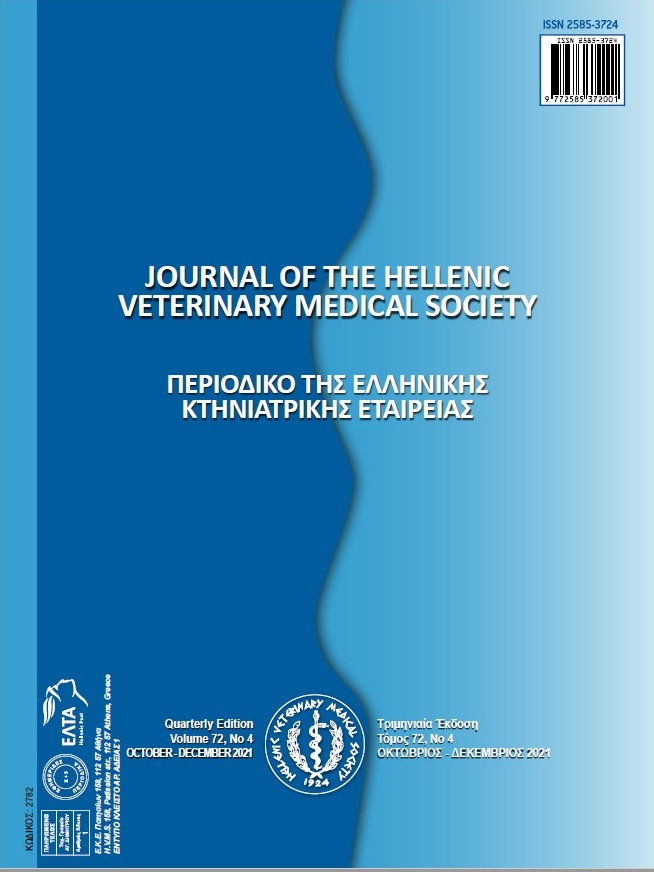Ameliorative effect of tocotrienol and selenium yeast against the adverse effect of florfenicol in broilers’ liver

Abstract
The prolonged use of florfenicol can lead to detrimental side effects in poultry. This work focuses on the role of tocotrienol and selenium yeast to mitigate the adverse effects of florfenicol in broilers’ liver. One hundred and fifty, one-day-old Cobb broiler chicks where equally divided in 5 experimental groups according to the following experimental design: Group (1) control group chicks fed to a balanced diet only. Group (2) Chicks treated with florfenicol (20 mg/kg b.w.) per bird for 3 successive days and the florfenicol was administered in other groups by the same dose and for the same period of time. Group (3) chicks treated with florfenicol and tocotrienol (170 mg/kg b.w.) for 7 successive days. Group (4) Chicks treated with florfenicol and selenium yeast (0.15mg /kg b.w., on feed) for 7 successive days. Group (5) Chicks treated with a combination of florfenicol, tocotrienol and selenium yeast. Chickens treated with florfenicol exhibited an increased level in hepatic malondialdehyde (MDA), as well asa decreasedlevel in hepatic superoxide dismutase (SOD) and reduced glutathione (GSH). Tocotrienol and selenium yeast decreased the MDA and increased SOD and GSH in hepatic tissue as well as return ALP, cholesterol, triglyceride and VLDL to their normal levels. Treated chicks with tocotrienol returned serum (ALT) to normal activity but serum total protein and albumin levels were increased. Theselenium yeast treated groups showed an increase of serum total globulin. Histopathologically, florfenicol treated group had focal hepatic leukocytic infiltration and focal coagulative necrosis of hepatocytes but chickens with the combination of tocotrienol and selenium yeast had activated Kupffer cells and revealed less evident necrotic changes in liver. In conclusion, tocotrienol and selenium yeast administrated alone or in combination highlightedimproved antioxidant effects and mitigated the lipid peroxidation in broilers’ liver treated with florfenicol. Thus, tocotrienol and selenium yeastcan improve the safety of using florfenicol in broiler chickens under experimental conditions.
Article Details
- How to Cite
-
HOSNY, A., KHAIRY, M., ASY, A., & ABOZEID, E. (2022). Ameliorative effect of tocotrienol and selenium yeast against the adverse effect of florfenicol in broilers’ liver. Journal of the Hellenic Veterinary Medical Society, 72(4), 3481–3490. https://doi.org/10.12681/jhvms.29399
- Issue
- Vol. 72 No. 4 (2021)
- Section
- Research Articles

This work is licensed under a Creative Commons Attribution-NonCommercial 4.0 International License.
Authors who publish with this journal agree to the following terms:
· Authors retain copyright and grant the journal right of first publication with the work simultaneously licensed under a Creative Commons Attribution Non-Commercial License that allows others to share the work with an acknowledgement of the work's authorship and initial publication in this journal.
· Authors are able to enter into separate, additional contractual arrangements for the non-exclusive distribution of the journal's published version of the work (e.g. post it to an institutional repository or publish it in a book), with an acknowledgement of its initial publication in this journal.
· Authors are permitted and encouraged to post their work online (preferably in institutional repositories or on their website) prior to and during the submission process, as it can lead to productive exchanges, as well as earlier and greater citation of published work.


